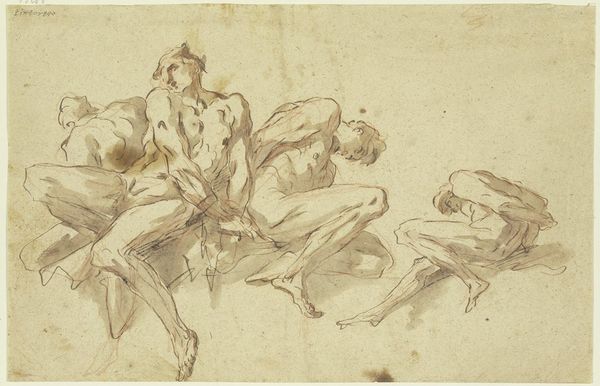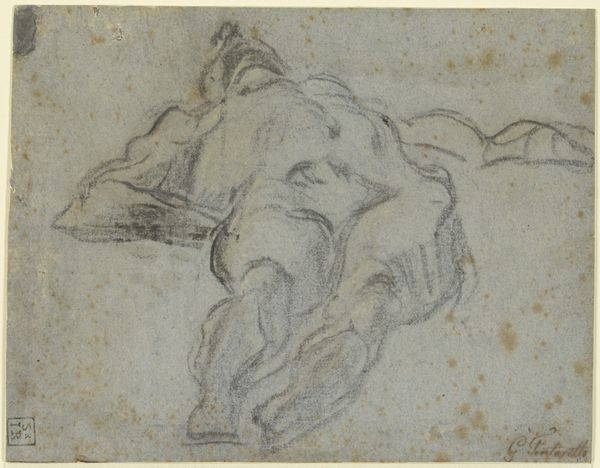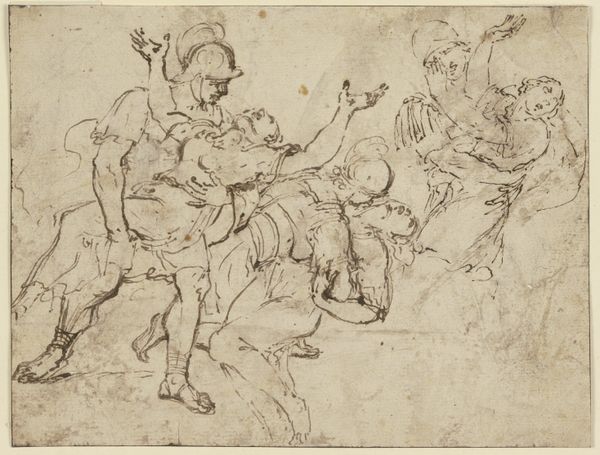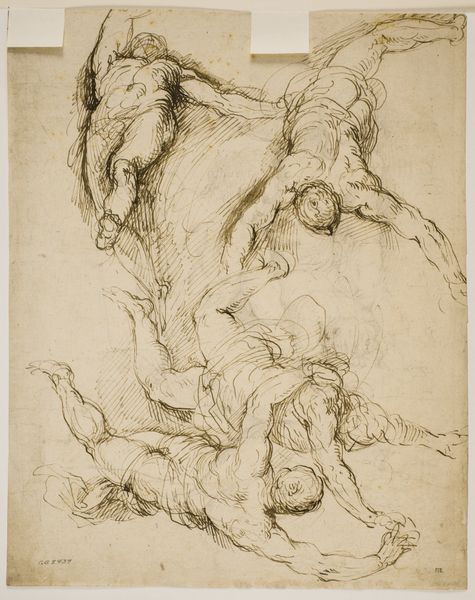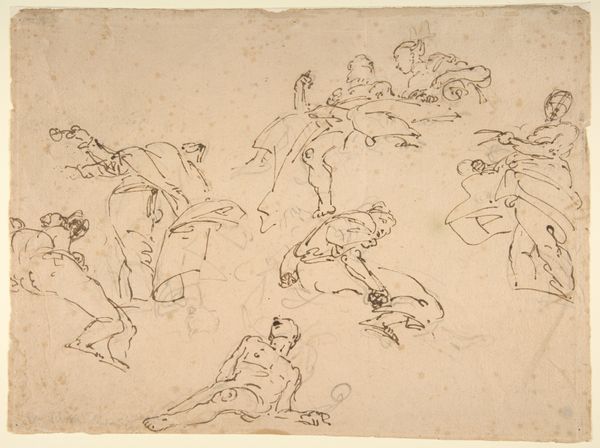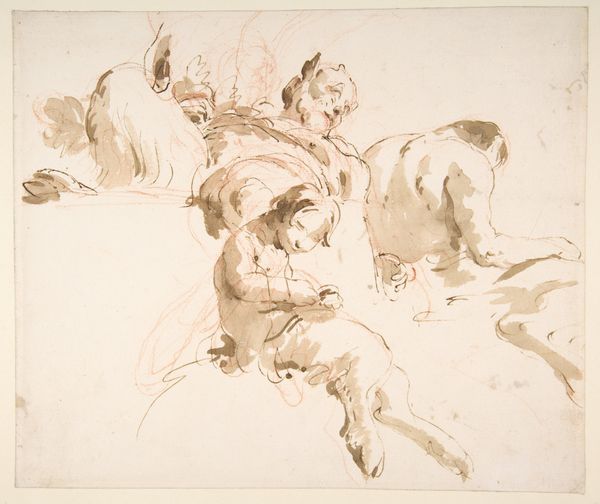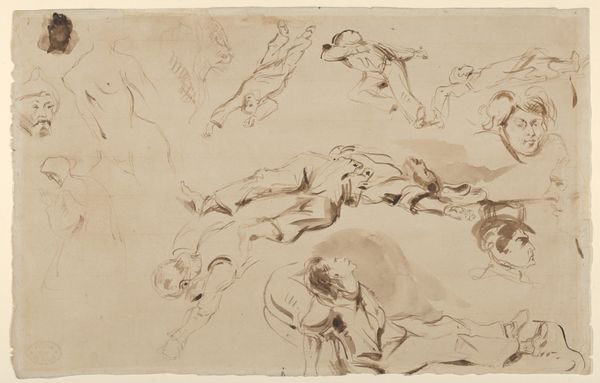
drawing, chalk, pen
#
portrait
#
drawing
#
baroque
#
etching
#
figuration
#
chalk
#
pen
#
academic-art
Copyright: Public Domain
Curator: Here, at the Städel Museum, we see “Heiliger Hieronymus (Fragment),” attributed to Gaspare Diziani. It is a drawing executed in pen, chalk, and etching. Editor: The figures are loosely drawn and seemingly trapped in this sepia toned purgatory. It projects a quiet and mournful mood, particularly considering the vulnerable postures. Curator: Vulnerability certainly seems to be at the fore. It appears to be academic work that, for me, is most interesting as an artifact that captures a specific production process within a historical art world. It embodies both artistic labor and the circulation of these very sketches amongst artists as source material. Editor: The positioning of the figures, hunched and despondent, can't be separated from their connection to narratives of penance and humility that were prevalent in religious and secular life. It's possible this fragment refers to Saint Jerome's transformation or an experience of inner turmoil; certainly there's room for such contextual analysis. Curator: Well, by focusing on the production and consumption of art, we might learn how images reinforced systems of patronage, power, and pedagogy at a critical time of art production in Europe. Perhaps they aren’t trapped so much as carefully posed. Editor: Whether consciously planned or reflecting inherent constraints of class and access, artistic choices are never neutral acts, particularly with their connections to hagiography or historic events. It calls us to delve more into Diziani’s intentions, but even more into how such pieces shaped wider cultural perceptions. Curator: I am not unsympathetic to historical analysis, but by examining the choices and material conditions involved in artistic creation, from pigments to patronage, we gain critical insight into value systems of the time. Editor: Exactly—which brings us back full circle to what Diziani depicts versus what that depiction *does* in a given socio-cultural environment. A very necessary dialectic! Curator: Agreed. I see something newly relevant, now. Editor: As do I. Thank you for guiding us into this interesting visual terrain.
Comments
No comments
Be the first to comment and join the conversation on the ultimate creative platform.
